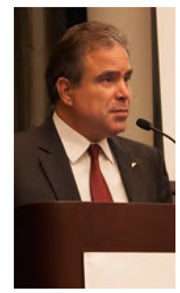Saying that the CHW-VRF debate risks confusing stakeholders into making less than optimal decisions, Francois Boueri, Vice President – AHRI MENA, chooses to walk the middle ground in an attempt to put things in perspective
This is Part 4 of the ongoing discussion on chilled water systems and VRF systems. Earlier parts are available for reading at www.ccme.news
The chiller vs VRF debate is not new. It is never easy comparing two different technologies, and this debate is sure to continue until relevant field test data emerge that all sides accept to be accurate and fair.
The excerpts, below, highlight the intensity of the current passionate and competitive cross dialogue:
“VRF systems are better than chillers… chiller systems are better than VRFs”
“Don’t believe the hype about VRF systems”
“Arbitrary conclusions”
“Why call them arbitrary?”
“Can the VRF overcome the chiller mentality in the Middle East”
Professionals develop bias when they subconsciously base their arguments on personal factors affecting them, such as: “How well do I understand the technology?” “Do I have access to it?” “Does my organisation/department benefit when promoting it, installing it or servicing it?” Whilst competition is healthy and beneficial to the industry, and end-users would benefit more if this debate were based on performance, certified equipment test and measured field data.
If we were to continue with the current approach, the VRF-chiller debate risks confusing stakeholders into making less than optimal decisions. Indeed, imagine if an owner were made to believe a chiller was the solution when a VRF were more appropriate.

Francois Boueri
At the same time, another owner were convinced that a VRF system was best when a chiller would actually be more appropriate for their particular situation. The outcome would be two unhappy clients and lost trust and credibility for the messenger – the messenger, in this case, being the collective HVAC industry. Would it not be much better for contractors and specifiers to recommend chillers or VRFs only where and when appropriate?
Over the years, I have been fortunate to work with both VRF and chiller systems from various vantage points:
I can say with confidence that each system has its merits and challenges, and what might be suitable for a given building may not work for another. Furthermore, the ultimate outcome regarding whether a VRF or chiller system is the best choice depends on a variety of factors, including, but not limited to:
Selecting an efficient system at the design stage paves the way to an efficient building, in principle. Unfortunately, the road to actual building efficiency is fraught with challenges at the procurement, installation, commissioning, and operational and maintenance building life stages. With this in mind, I strongly encourage and urge both sides of the VRF-chiller debate to champion and deliver the highest possible efficiency per square metre, not simply at the design and selling stage but throughout the projected life of the building. This is an essential paradigm shift needed to reach the UAE Net Zero by 2050 Strategic Initiative.
The VRF-chiller debate, in its current form, highlights key challenges faced by the HVAC industry in the GCC region: How can an investor, a designer or a regulator ascertain the efficiency of any cooling system?
HVAC suppliers in the United States struggled with and, eventually, conquered similar challenges in the past. The following excerpts from the Air Conditioning Heating Refrigeration News, dated November 5, 2002, indicates the circumstances in the country, and a solution…
“New products and applications seemed to develop monthly, and not always with the best results. Legitimate manufacturers found their products pitted against products that came out of garages, and began to fear that they would soon find themselves pitted against consumer scepticism.”
“The Air Conditioning and Refrigeration Institute (ARI) was officially organized in 1953, primarily to give this new industry a united voice. Secondarily, but perhaps more importantly, the Institute collected its technical forces to create standards against which A/C and refrigeration equipment could be tested, and to create industry-wide certification programs to verify the products performance.”
Sixty-eight years on, AHRI (ARI previously) is a global association with more than 140 standards and 40+ certification programs. AHRI standards and certification programs are now accepted by all manufacturers as the gold standard. The AHRI Certification Directory publishes the performance and efficiency of each listed product. The first standard to address VRF, AHRI 1230, was released in 2010, together with certification and testing program, shortly thereafter.
AHRI is working with leading VRF manufacturers to develop a Global VRF Standards and Certification program that takes into consideration all existing international VRF standards, global weather conditions, Control Verification Procedures and mapped ratings. AHRI will submit the final draft of the newly developed document to ISO, when completed, as the basis of the new international VRF standard that will have the support of the entire industry.
In 2020, AHRI established a Representative Office in the MENA region, based in Dubai. The local staff has been actively engaging with manufacturers, regulatory bodies and other stakeholders. The goal is to ensure alignment and establish a level playing field when standards and certification programs for HVAC systems are considered for this region.
The team recently established a Chillers Regional Industry Group, to collect relevant regional operation and weather data to develop a calculation method for chillers’ seasonal energy efficiency and ensure that the region’s unique requirements are addressed in the AHRI 550/590: chillers standard and certification program. The local team will also start a similar group to share, discuss and get feedback on the newly developed VRF global standard. All interested parties, including manufacturers, regulators and consultants are encouraged to join.
Copyright © 2006-2025 - CPI Industry. All rights reserved.